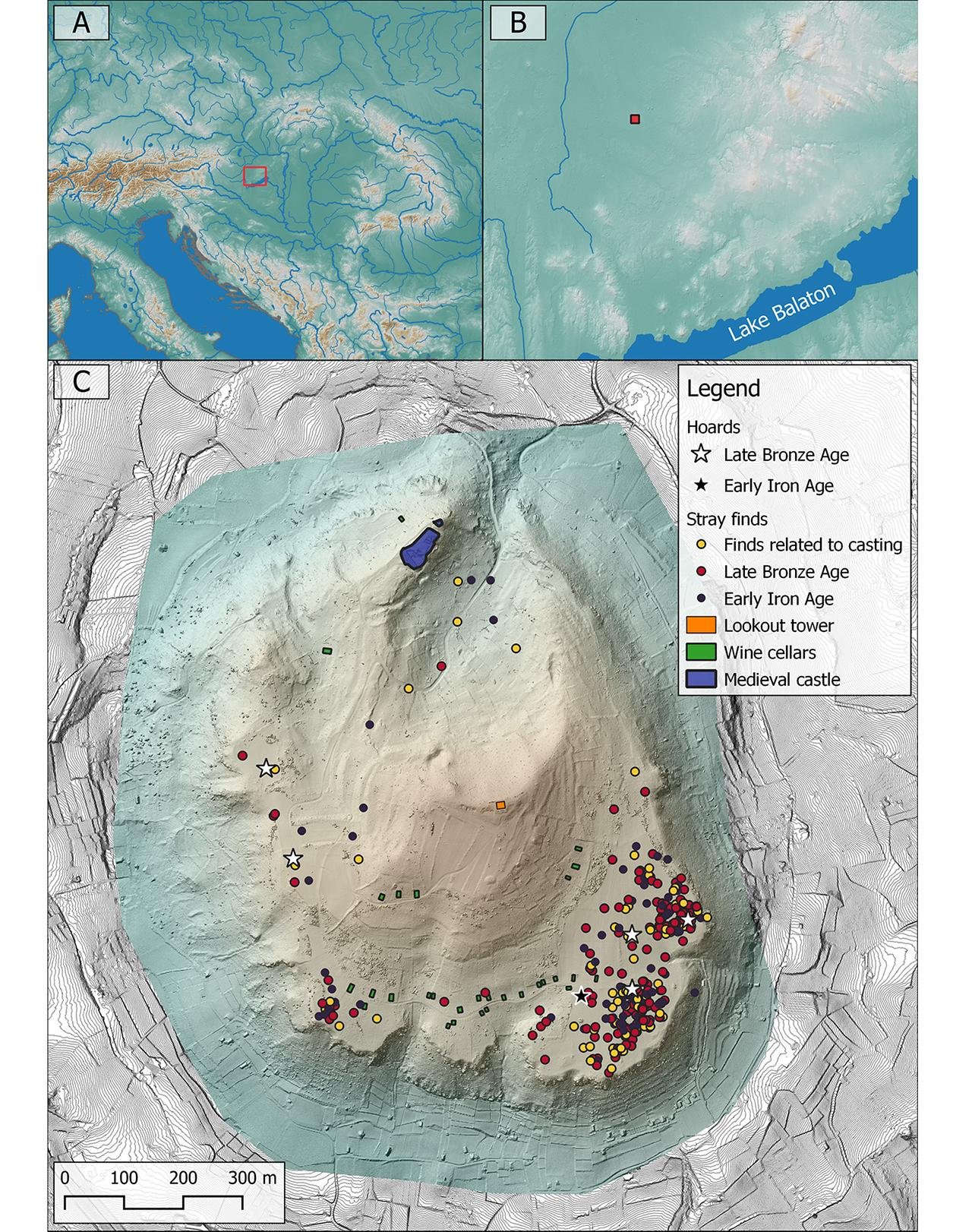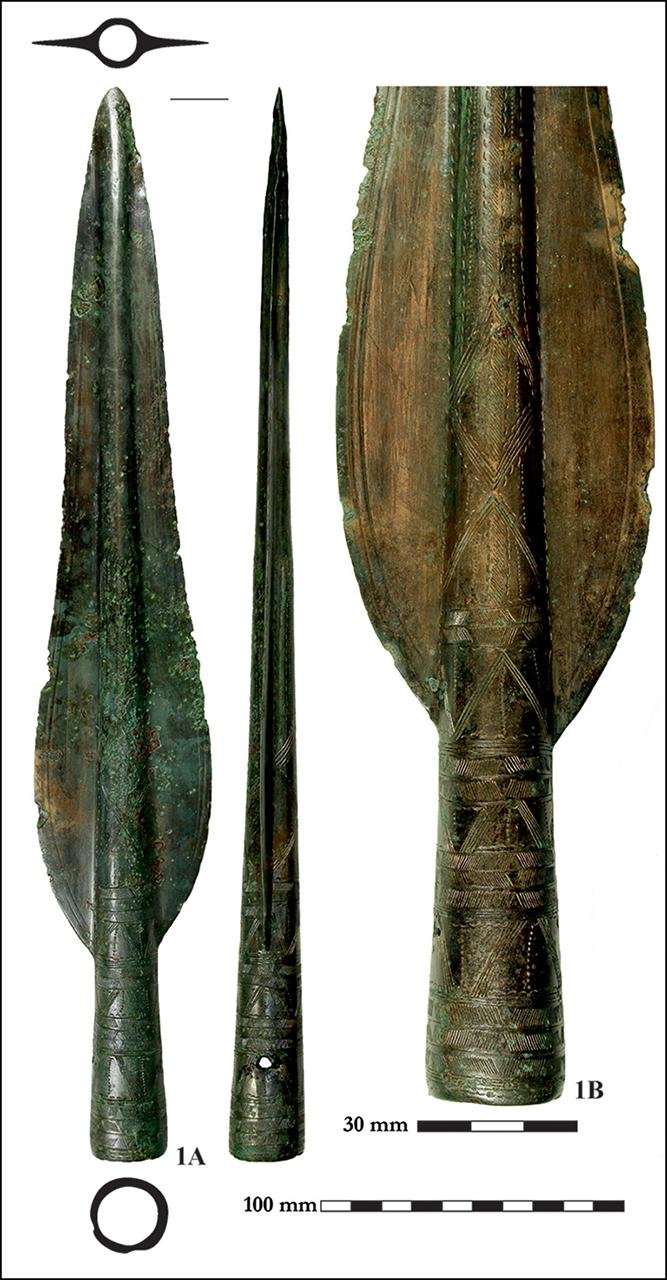Archaeologists excavating Somló Hill in western Hungary have unearthed six extraordinary hoards of metal artifacts over 3,000 years old, offering new information on the social and ritual life of Bronze and Iron Age communities in the area. The finds, which were made between 2023 and 2025, were detailed in a recent paper published in the journal Antiquity.
 Some of the metal artifacts from the Early Iron Age discovered on Somló Hill, Hungary (pH๏τograph by László György). Credit: Bence Soós et al., Antiquity (2025)
Some of the metal artifacts from the Early Iron Age discovered on Somló Hill, Hungary (pH๏τograph by László György). Credit: Bence Soós et al., Antiquity (2025)
Somló Hill, a 1,400-foot-high extinct volcanic ʙuттe in Veszprém County, now encircled by vineyards, has interested scholars for a while. Discoveries excavated from the area as early as the 19th century indicated the importance of the site, but systematic archaeological investigation had been limited until recent years. Now, an excavation team led by archaeologist Bence Soós and affiliated with the Hungarian National Museum’s Public Collection Center has revealed the site as one of the richest sources of Late Bronze Age (1450–800 BCE) and Early Iron Age (800–450 BCE) material in the region.
The team used a range of advanced survey techniques, including metal detecting, field-walking surveys, magnetic prospection, and airborne laser scanning (lidar), to map and study the site. The work revealed over 900 metal objects, largely concentrated on the southeastern plateau of the hill. Importantly, five of the six hoards are dated to the Late Bronze Age, with one from the Early Iron Age. They include jewelry, brooches, decorative discs believed to be military adornments, and a rare Alpine-type spearhead from Hoard I.
The preservation and the conditions of the discoveries make these finds absolutely exceptional. Two of the hoards (III and V) were buried in ceramic pots—a practice long hypothesized but never confirmed for this period in western Hungary. The pots were carefully excavated and sent to the University of Pannonia, where they were subjected to computed tomography (CT) scanning to analyze the internal arrangement of the objects. Researchers also performed neutron tomography on some of the objects to uncover manufacturing techniques and flaws.
 Location of the research area (A) and Somló Hill (B). A digital terrain model of Somló Hill (C) shows the locations of nearthed artifacts. Credit: Bence Soós et al., Antiquity (2025)
Location of the research area (A) and Somló Hill (B). A digital terrain model of Somló Hill (C) shows the locations of nearthed artifacts. Credit: Bence Soós et al., Antiquity (2025)
Soós emphasized the significance of Hoard V in particular, noting that it provides “the first evidence of local metal deposition customs during the transition between the Late Bronze and Early Iron Ages.” Along with metalwork, this hoard contained amber beads, pig and boar tusks, and fragments of textiles and leather, underscoring the ritual complexity of the deposit.
According to the authors of the study, the continuous settlement of the hilltop during this period of transition contradicts prevailing ᴀssumptions regarding settlement patterns in the region. Typo-chronological and radiocarbon dating—particularly of organic materials such as the bones in Hoard I—are expected to establish a more precise chronology of occupation.
 Alpine-style spearhead from Hoard I on Somló Hill in Hungary. Credit: Bence Soós et al., Antiquity (2025)
Alpine-style spearhead from Hoard I on Somló Hill in Hungary. Credit: Bence Soós et al., Antiquity (2025)
The organization and layering of the objects within the hoards suggest a sophisticated ritual and symbolic behavior system, possibly tied to an elite warrior class. Soós and his colleagues noted that Somló Hill offers a unique chance to redefine our understanding of hoarding traditions during the Hallstatt B period in Transdanubia.
The research also refers to Somló Hill’s potential role as a central place in the Late Bronze Age settlement network, serving perhaps as a power seat for tribal or clan societies. This is supported by earlier findings of monumental burial mounds in the area, indicating the presence of high-status individuals.
More information: Soós, B., Péterváry, T., Mesterházy, G., Látos, T., Pető, Á., Pethe, M., … Tarbay, J. G. (2025). Later prehistoric hoarding and habitation on Somló Hill, western Hungary. Antiquity, 1–8. doi:10.15184/aqy.2025.44





